ARCTIC ADAPTATIONS: HOW ARCTIC ANIMALS THRIVE IN SOME OF THE HARSHEST ENVIRONMENTS ON EARTH
Featured
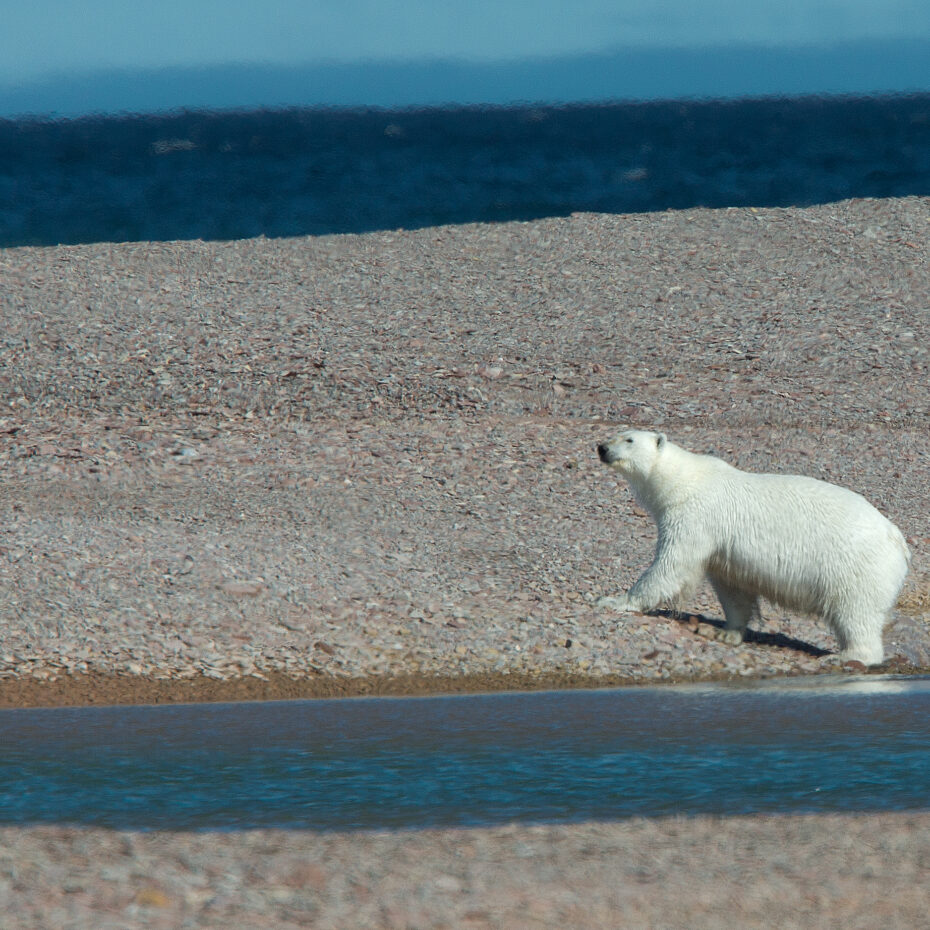
Featured
May 25, 2020 | Arctic Watch & Arctic Haven
Unrelenting winters and short summers create a less than ideal environment for life to flourish. Yet, the Arctic still has an abundance of unique life that has adapted to this environment and thrives in it.
Grizzly bears that slowly evolved into the iconic polar bear, intricate cycle of caribou antlers and more - we will be looking at a few of these adaptations that allow arctic animals to survive.
Polar bears:
Due to their size and fierce reputation, it would seem that polar bears are the modern siblings of some prehistoric mega bear. This is false, however, as their lineage still walks the earth with them today. Scientists say that genetic tracking indicates that thousands of years ago, grizzly bears began moving north to inhabit a previously bear-less environment. As they did so, numerous adaptations occurred to produce the now distinctly different polar bear.
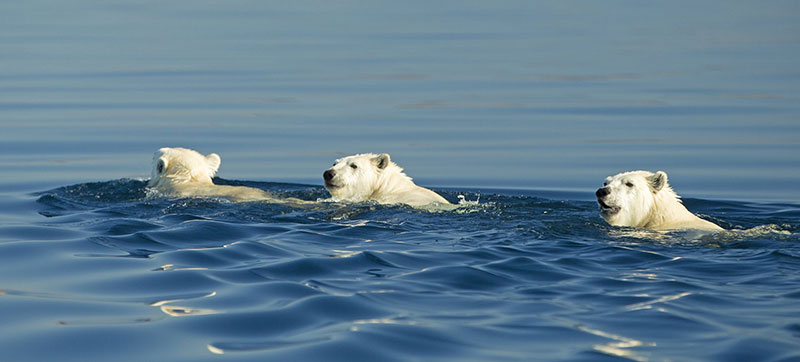
The harsh conditions favoured larger and stronger bears meaning the smaller bears would not survive to reproduce and pass on their genes. As they traveled further and further north, the flora that consisted of the majority of their diet began to disappear. This forced them to focus on the large fauna inhabiting the ocean such as ringed and bearded seals. The brown fur that wasn’t a problem when they ate berries all summer and slept all winter was an obvious problem while hunting on the ice. Over time, a genetic mutation causing the classic white fur on a polar bear became the dominating gene and a new species was born.
One of the most interesting adaptations in the Arctic is the polar bears heat recycling method. Although they have shiny white fur, the actual skin beneath their fur is black. This allows them to reuse the energy that would otherwise be lost. The heat radiating off the body of the polar bear is reflected by its shiny white fur back to its heat absorbing black skin. Nature's take on an emergency blanket.
Polar bears have two layers of insulating fur with a greasy outer layer to shed water quickly. Their dependence on marine mammals for food has forced them to be very strong swimmers. With slightly webbed feet they can swim at speeds of up to 10km/h.
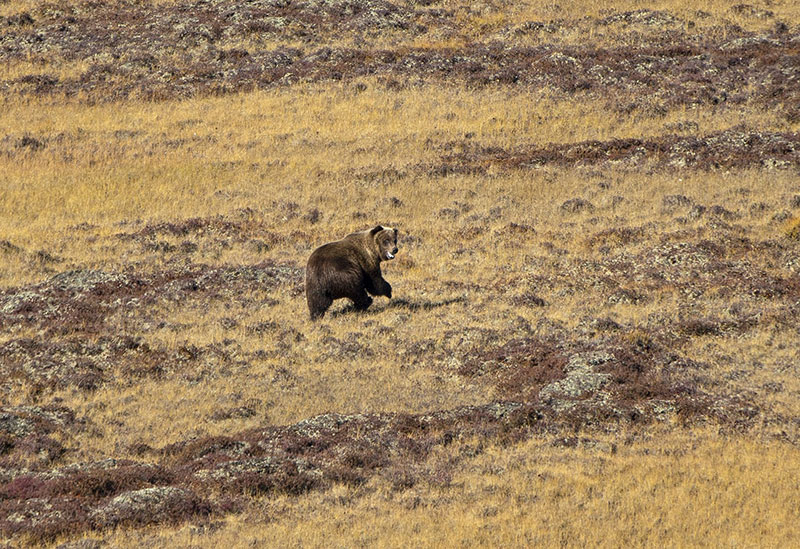
At Arctic Haven Wilderness lodge on the shores of Ennadai lake in the Nunavut Barrens and at Arctic Watch Wilderness Lodge on Somerset Island, we have the opportunity to see both grizzly bears and polar bears. An interesting look at the line where grizzlies began to evolve into polar bears. Check out our combined Ultimate Arctic adventure to have a chance at seeing both of these majestic creatures for yourself.
Caribou:
Unlike their deer and moose relatives, both male and female Caribou grow antlers. If antlers main purpose in male deer and moose is for sexual selection, why then do both sexes of caribou grow them?
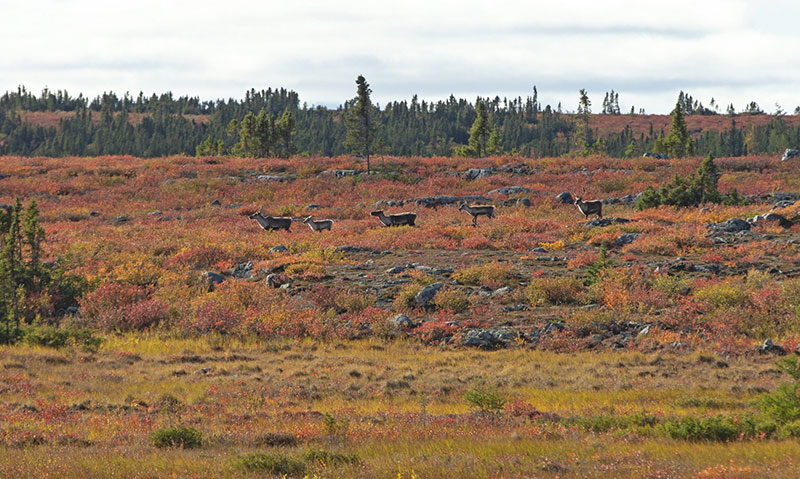
Male caribou begin growing antlers in the spring to have their fully formed antlers by the rut in the fall. Soon after the rut, as the males lose their antlers, the females are just beginning to grow theirs. While the males’ antlers are larger and meant for battling other males and impressing females, the female’s are smaller and meant to give them an advantage over feeding rights. By spring, even the non-pregnant females shed their antlers so that the only herd members with antlers are pregnant females. This gives the herd members that need access to food the most the means to shove non-antler bearing caribou out of the way.
Arctic Haven is set along the Qamanirjuaq caribou herd's migration route from their calving grounds in the Barrens to their winter home at the tree line. Our adventure dates at Arctic Haven are strategically timed to align with their return journey in the fall. Learn more here.
Muskox:
Muskox, from the family of Bovidae which includes sheep and goats, have mastered the layering system. It is no secret why the muskoxen’s inner layer of fur, called qiviut, is a highly regarded clothing material - it is very warm! While their qiviut insulates from the inside, their outer guard hairs protects them from wind, precipitation, and insects. These guard hairs are very long and shaggy, giving the impression that muskox are much larger than they actually are.
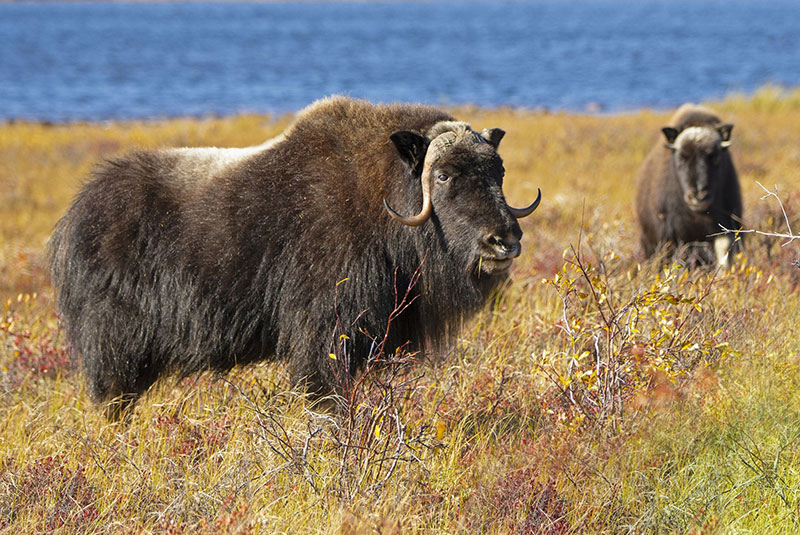
Muskox have also developed a unique way of insulating by using their fat reserves. Due to the short summer season, they go on a feeding frenzy when the vegetation is abundant in order to obtain a fat layer that will generate body heat come winter. Most interestingly, young muskox are already born with this fat layer. This is necessary to their survival as they are born right into the frigid temperatures that demands more heat than their short fur can provide.
The most recognizable feature of a muskox is its reinforced skull that has horns protruding from either side of it. This allows them to protect themselves from predators and fellow herd members in fights. Check out a video of these head plates in action here.
Both Arctic Haven and Arctic Watch have local muskox herds.
We understand that booking a trip like this is a big endeavour. Please reach out to us with any questions that you might have regarding your upcoming adventure.